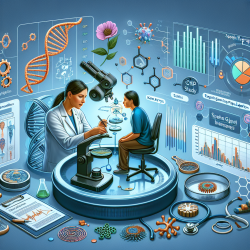The complexity of Autism Spectrum Disorders (ASD) has long posed challenges for practitioners seeking effective interventions. Traditionally viewed through a neuro-functional lens, recent research suggests that ASD's impact extends beyond the brain to multiple body systems. The "Connectivome Theory," as proposed in a recent study, offers a fresh perspective by examining the role of connective tissue in ASD. This approach could redefine how practitioners evaluate and treat individuals with autism.
The Connectivome Theory Explained
The Connectivome Theory posits that connective tissue, which links various body systems, plays a crucial role in the multisystem involvement seen in ASD. This tissue is not only structural but also acts as a regulatory and protective barrier between internal and external environments. It shares a close relationship with the central nervous system, musculoskeletal system, and immune system. Alterations in these connections might contribute to the diverse symptoms observed in ASD.
Implications for Practitioners
Practitioners can leverage this theory to enhance their clinical evaluations by considering somatic elements alongside neurofunctional assessments. Here are some practical steps:
- Holistic Evaluation: Incorporate assessments of connective tissue function into routine evaluations of individuals with ASD. This includes examining muscle tone, joint mobility, and skin health.
- Multidisciplinary Approach: Collaborate with specialists across fields such as neurology, immunology, and gastroenterology to address the multisystem nature of ASD.
- Personalized Interventions: Develop individualized treatment plans that consider both neurological and somatic aspects of ASD. This could involve therapies targeting sensory processing or gut health.
Encouraging Further Research
The Connectivome Theory opens new avenues for research into how connective tissue alterations affect ASD symptomatology. Practitioners are encouraged to engage in or support studies that explore these connections further. Understanding the interplay between genetics, environment, and connective tissue could lead to more effective interventions.
Conclusion
The Connectivome Theory provides an innovative framework for understanding ASD beyond traditional neuro-functional models. By considering the role of connective tissue and its interactions with various body systems, practitioners can gain deeper insights into the disorder's complexity. This holistic approach not only enriches clinical evaluations but also paves the way for more comprehensive and personalized care strategies.
To read the original research paper, please follow this link: The “Connectivome Theory”: A New Model to Understand Autism Spectrum Disorders.










